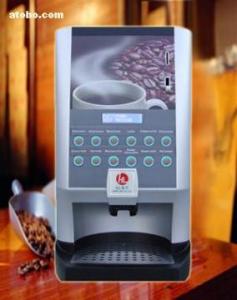Know two temperatures. One is the starting and ending temperature of foaming, and the other is the temperature at which the milk foam is made.
Know two temperatures. One is the starting and ending temperature of foaming, and the other is the temperature at which the milk foam is made.
Every time I communicate with my friends on this subject, I only get some very general results. For example: be delicate (what is delicacy? No one can explain it in precise words), like velvet (what is velvet? As a national protected animal, how many people dare to hit a swan and touch its velvet? To be slippery (Oh, this is also funny, because milk is the most slippery, just like this guy is lazy and has nothing left in your mouth), and such extremely vague adjectives are numerous. But there is a saying, which I agree with, to share with you: the surface should be reflective. I think this statement is very objective and direct, at least it can be used as a standard to be seen by the naked eye.
The main reason for saying so much here is to give you a standard that can be touched by the hand, seen by the eye and heard by the ear. Once this standard is mastered, we will discuss the comprehensive impression formed in the mouth through the oral mucosa, taste buds and through the internal nostrils of the palate, that is, the question of taste.
So what are these standards? The surface should be able to reflect light first.
The second criterion is that there is no coarse foam on the surface. This requires a lot of foam control ability, of course, this is also the premise of reflection. So what is a coarse bubble? If we have to give it a definition, I think anything larger than the diameter 1mm is called coarse foam.
The third standard is: in the case of the same amount of milk (all added to the position at the bottom of the cylinder mouth), regardless of whether it is 60% full or 70%, 80%, 90% or full, the temperature should be the same, and the number of milk bubbles cannot be adjusted by the temperature.
The fourth standard is to make two cups of cappuccino, using the WBC standard cup. After the foam is poured into the cup, there is no drop left in the jar. If this standard is sublimated a little bit, it will become: just hit as many milk bubbles as you want (except for micro-bubbles such as macchiato), which is very difficult to practice and takes a long time, and the author can only do it occasionally.
The above four standards have been achieved, at least it can be regarded as a good bottle of milk foam in terms of vision, feel and technology. Earlier also mentioned a sense of hearing, which depends on the milk, just hit the milk foam, must not hear a very continuous burst sound, which can ensure the persistence of the milk foam in the cup. A topic about cappuccino is about the classification of cappuccino. Cappuccino can be classified according to the quality of milk foam, divided into three categories, one is wet cappuccino, one is dry cappuccino, and the other is half cappuccino in between. So how do we distinguish between these three kinds of cappuccino? If the foam technology passes, you can use the quality of the foam to distinguish as follows: premise: 600ml (medium) pull the flower jar around, and fill the milk at the bottom of the nozzle.
The first step is to understand the correct operation process of the coffee machine steam system, understand the purpose of the empty steam pipe before and after foam, and understand the importance of towels and easy cleaning in coffee making.
The second step is to learn how to use the sprinkler to touch the milk surface, the location and depth of the selected point.
The third step is to recognize the two temperatures. One is the starting and ending temperature of foaming, and the other is the temperature at which the milk foam is made. These two temperatures are very important for beginners, which is directly related to the mastery of the principle of foam. First of all, when it comes to foaming, the milk is cold at first (preferably refrigerated at 5 ℃), which can prolong the foaming time so that it can be fully foamed and delicate, and then open the steam valve to foam the milk. When foaming is consistent with our body temperature (feel neither hot nor cold), the foaming is cut off. Because our hand temperature is about 30 degrees, so I personally think that the temperature of milk foam should be between 65 and 70 degrees. Because if it is too hot, it will destroy the nutritional value of milk.
Next, let's talk about the temperature at the end of milking. In fact, there are many theoretical theories about this temperature, but it is not detailed here. We will talk about the feeling when we discuss the flavor of liquid milk in the future. I just want to talk about what the temperature feels like on the hand. When we feel this temperature with our hands (in continuous heating), it is hot, but we can stand it for two or three seconds; as soon as we feel warm, we stop heating (the back end of the heating feels very hot on the hand, but it can hold it).
In some places, thermometers are used to measure. I think this kind of teaching method is not good. Technology is something that people need to understand attentively, and it is not very good for people to improve their own skills with the help of external forces.
The fourth step is to know a dead angle of contact between a foam-drawing jar and the steam tube of a coffee machine. After watching a lot of domestic and foreign baristas beating milk foam, coupled with their own constant attempts, I found that playing milk foam has a dead angle, just like playing video games, some dead corners can not hit you, but you can hit others. This angle is very troublesome to say in words, probably because the nozzle of the flower jar must be lifted, and the cylinder block should be tilted according to the rotation direction of the foam.
Step five, find the vortex. The function of this vortex is to pull the coarse foam below the liquid surface through the vortex to make the surface clean. There are many states of a vortex, each of which needs to be observed and remembered. This point is so deep, let me keep it simple. If you want to have a vortex, the sprinkler of the steam pipe should not be too deep under the milk noodles.
The sixth step is the problem of moving the flower cylinder down and up. The sprinkler is in good contact with the milk, that is, open the steam valve, and the vat moves down very slowly, and you will hear the steam of "eating"cut" with the milk (about the shear force, when we discuss the principle of milk foaming later, talk slowly! The sound made by it is commonly known as "the sound of breathing". The sound of air intake to human body temperature can no longer appear, otherwise, there will be a lot of coarse foam on the surface.
At this point, move the flower jar up a little bit (just a little bit, which is important, which is understood by many people as moving up continuously, which is very wrong), and let the steam sprinkler leave the cutting surface so that the sound of "eating" can not be heard. At this point, by adjusting the angle of the vat, remember that it is the angle, not the position of the sprinkler and the surface (very small angle adjustment), find the vortex, pull the coarse foam off the surface in the foaming stage, and continue until the temperature reaches the hot temperature.

Important Notice :
前街咖啡 FrontStreet Coffee has moved to new addredd:
FrontStreet Coffee Address: 315,Donghua East Road,GuangZhou
Tel:020 38364473
- Prev

Coffee bean wet planing treatment-honey treatment coffee bean sun washing
Coffee bean wet planing treatment-honey treatment coffee bean sun washing is to eat its flesh part; we enjoy coffee, but its seeds are roasted and ground and soaked in water to drink, while the other peels and flesh are abandoned. Coupled with the fact that coffee seeds look like beans, people naturally call them coffee beans. In later descriptions, for simplicity and ease of understanding, we still use
- Next

Introduction of how to calculate the extraction rate of coffee and how to use the time method of the calculation formula
Coffee extraction rate how to calculate how to use the formula time method introduction 1, reasonable range for a cup of erpresso, 25 seconds 30 ml, used to be the golden rule that everyone keeps in mind. However, in the continuous exploration and attempt of boutique coffee, a group of reformed knowledge-based barista appeared among the coffee people, who almost completely abandoned the restrictions and used their own
Related
- What is the meaning of lactic acid fermentation with coffee bean treatment?
- How to judge the state of foam by sound?
- How does the latte pull out the unicorn pattern? Come to get for a little trick to improve the flower pull!
- Will flower pulling affect the taste of the latte?
- Do you know the history of coffee?
- The difference between honey treatment and sun washing what is raisin honey treatment?
- What kind of milk can a novice use to make coffee foam to keep the foam longer? The correct method and skills of milking tutorial sharing
- Why do washed coffee beans taste sour? Flavor characteristics of washed Coffee
- Introduction to the skill of how to practice the size and height of water injection around the circle of hand-brewed coffee
- How do beginners practice coffee flower drawing from scratch?

